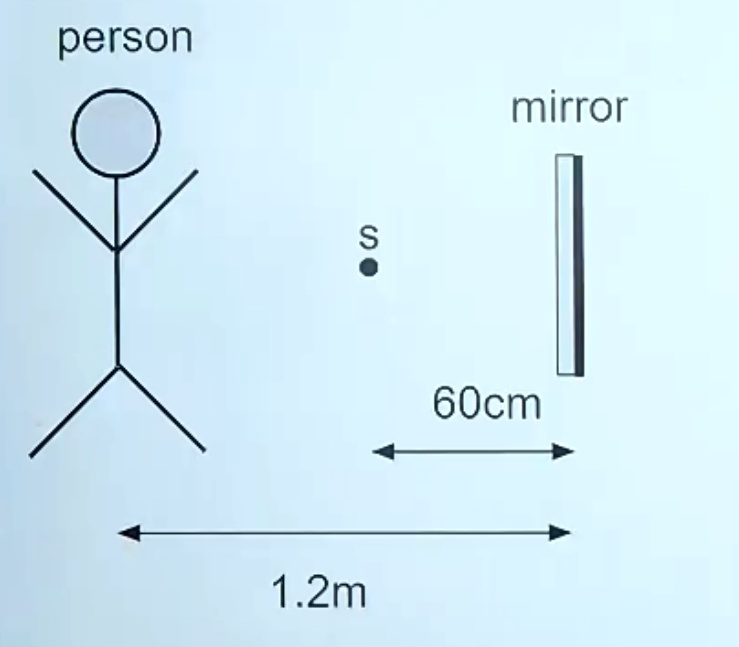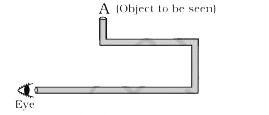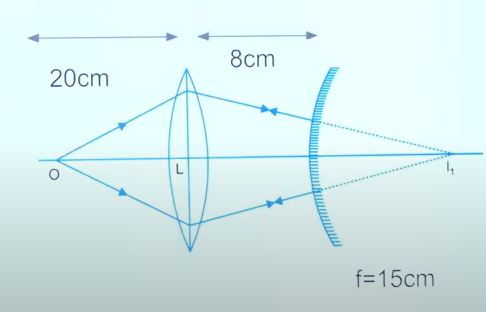If any of the mirrors is removed, will he be able to see the objects?
To solve the question, "If any of the mirrors is removed, will he be able to see the objects?" we can follow these steps:
1. Understanding the Setup:
- Bujo wants to see an object (let's call it Object A) that is not directly visible to him. He is using a pipe with mirrors placed at certain angles to reflect the light from Object A to his eyes.
2. Role of Mirrors:
- The mirrors (M1, M2, M3) are positioned at specific points within the pipe. Their purpose is to reflect the light rays coming from Object A so that they can change direction and travel along the pipe to Bujo's eyes.
3. Light Ray Path:
- When light rays emanate from Object A, they travel in straight lines. To reach Bujo's eyes, these rays need to be reflected by the mirrors. Each mirror changes the direction of the light ray, allowing it to travel along the pipe.
4. Removing a Mirror:
- If any one of the mirrors (M1, M2, or M3) is removed, the path of the light rays will be disrupted. The rays will not be able to change direction as required to reach Bujo's eyes.
5. Conclusion:
- Since the mirrors are essential for reflecting the light rays and changing their direction, if any mirror is removed, the light rays will not reach Bujo's eyes. Therefore, he will not be able to see Object A.
Final Answer:
If any of the mirrors is removed, Bujo will not be able to see the object.
---
- Bujo wants to see an object (let's call it Object A) that is not directly visible to him. He is using a pipe with mirrors placed at certain angles to reflect the light from Object A to his eyes.
- The mirrors (M1, M2, M3) are positioned at specific points within the pipe. Their purpose is to reflect the light rays coming from Object A so that they can change direction and travel along the pipe to Bujo's eyes.
- When light rays emanate from Object A, they travel in straight lines. To reach Bujo's eyes, these rays need to be reflected by the mirrors. Each mirror changes the direction of the light ray, allowing it to travel along the pipe.
- If any one of the mirrors (M1, M2, or M3) is removed, the path of the light rays will be disrupted. The rays will not be able to change direction as required to reach Bujo's eyes.
- Since the mirrors are essential for reflecting the light rays and changing their direction, if any mirror is removed, the light rays will not reach Bujo's eyes. Therefore, he will not be able to see Object A.
If any of the mirrors is removed, Bujo will not be able to see the object.
Topper's Solved these Questions
Similar Questions
Knowledge Check
- Question 1 - Select One
We are able to see things because
Athe light emitted by the objects reaches our eyesBthe light emitted by our eyes falls on the objectsCthe light scattered by the objects reaches our eyesDthe rays of sun fall on the objects - Question 2 - Select One
We are able to see moon because
Ait emits lightBit absorbs lightCit reflects sunlightDit is luminous - Question 3 - Select One
A person walks parallel to a 50cm wide plane mirror as shown. How much distance will he be able to see the image of a source placed 60cm in front of it ?
 A50cmB100cmC150cmD200cm
A50cmB100cmC150cmD200cm
Boojho planned an activity to observe an object A through pipes as shown in Fig. 16.8, so that he could see objects which he could not directly see.

How many mirrors should he use to see the objects?View SolutionHow are we able to see a moving picture?
View SolutionA student, holding a mirror in his hand, directed the reflecting surface of the mirror towards the sun. He then directed the reflected light on to a sheet of paper held close to the mirror.
(a) What should he do to burn the paper ?
(b) Which type of mirror does he use ?
(c) Will he be able to determine the approximate value of focal length of this mirror from this activity ? Give reason and draw ray diagram to justify your answer in this case.View SolutionFish are able to see under water because
View SolutionFish are able to see under water because
View Solution


